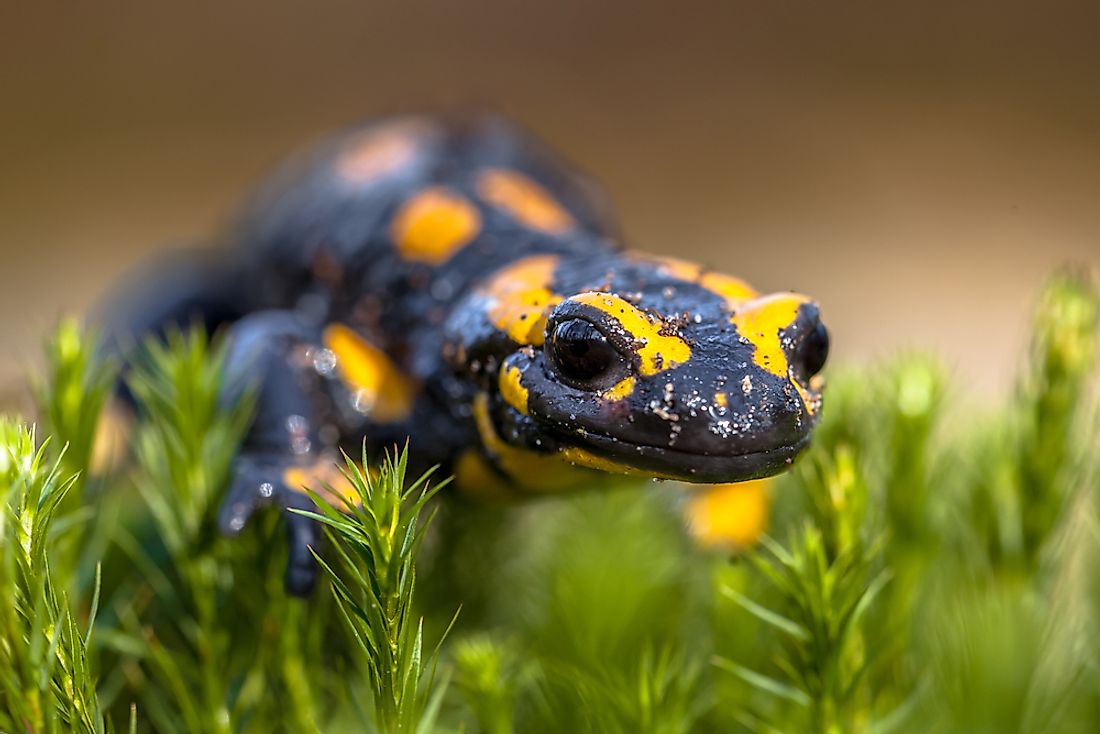Native Amphibians Of Poland

The country of Poland is located in eastern Europe, with a coastline along the Baltic Sea. This article will discuss the native amphibians of the country. It will mention physical characteristics, habitats and range, as well as their current conservation status and what major threats they face.
Some of the native amphibians of Poland:
Agile Frog
The Agile Frog, scientific name Rana dalmatina, is a species of frog that is a member of the Ranidae family of true frogs that are found on all continents except Antarctica. Adult males of the species seldom grow to be larger than 2.55 inches in length, while adult females are larger and can grow to be up to 3.14 inches in length. The upper-side of the species body is either a light brown, reddish-brown or light grey-brown color, while the belly is a white color that is spotless. The species also has dark brown colored triangle-shaped spots on the side of its head. This species habitat is in glades or other open sites that are located within light deciduous woodland, although it has also been known to be found in meadows and thickets. This species can be found across most of Europe. n Poland this species is only found in a small area in the south, close to the border with Slovakia. According to the International Union for Conservation of Nature (IUCN) Red List, the Agile Frog has been listed as a species of least concern since 2004 and its current population trend is decreasing. The major threats that this species faces are the drainage and pollution of its breeding areas, development and logging in its habitat and the road mortality rate.
Carpathian Newt
The Carpathian Newt, scientific name Lissotriton montandoni, is a species of salamander that is a member of the Salamandridae family that is made up of true salamanders and newts. Adults of this species grow to be about four inches long, with females usually being slightly larger than males. The upper-side of the species is either an olive-brown or yellowish-brown color and is generously speckled with fine dark spots. In contrast, the belly is either an orange or yellow color, with small black sides along the sides. The lower area of the tail is either a white or orange color with large black spots. The habitat of this species is in wet and shaded coniferous, deciduous and mixed forests, as well as in meadow glades and sub-alpine areas. This species is native to the east Carpathian Mountains and easternmost Sudetes Mountains in the Czech Republic, Poland, Romania, Slovakia and Ukraine. It has also been introduced into the Bavarian Forest in Germany. According to the IUCN Red List, the Carpathian Newt has been listed as a species of least concern since 2004 and its current population trend is decreasing. The major threats that this species faces are from the loss of its habitat due to logging and development, pollution due to sewage and the introduction of predatory fish species.
Fire Salamander
The Fire Salamander, scientific name Salamandra salamandra, is a species of salamander that is also a member of the Salamandridae family. Adults of this species usually grow to be between 5.9 to 9.8 inches long and weigh around 1.41 ounces. The species is usually black with yellow colored spots or stripes, although the coloration can vary enough where they can be almost completely black or yellow in color. There are also times where the yellow spots or stripes can be mixed or replaced with shades of red and orange, depending on the subspecies. Adult males and females look almost similar outside of breeding season, where males have a swollen gland around their vent. The habitat of this species is usually in wet and cool deciduous or mixed forests, as well as in small rivers and very well shaded brooks. This species is found across most of central, eastern and southern Europe. According to the IUCN Red List, the Fire Salamander has been listed as a species of least concern since 2004 and its current population trend is decreasing. The major threats that this species faces are from the localized threats of general habitat destruction, pollution of its breeding sites by agricultural chemicals, road mortality, collection for trade purposes and the introduction of predatory species, like crayfish.
What is being done to help the native amphibians of Poland:
There are steps that have been taken to try and help the native amphibian species of Poland. All three species mentioned above, as well as others, are listed on the Appendix II the Bern Convention of the European Union (EU) Habitats Directive. These species, as well as others, are also protected by national legislation from the government of Poland. Some of these amphibian species are also found in national parks or other protected areas that have been set in the country.
Native Amphibians Of Poland
| Native Amphibians of Poland | Scientific Name |
| Agile Frog | Rana dalmatina |
| Alpine Newt | Mesotriton alpestris |
| Carpathian Newt | Lissotriton montandoni |
| Common Frog | Rana temporaria |
| Common Spadefoot | Pelobates fuscus |
| Common Toad | Bufo bufo |
| Edible Frog | Pelophylax kl. esculentus |
| European Fire-Bellied Toad | Bombina bombina |
| European Green Toad | Bufo viridis |
| European Tree Frog | Hyla arborea |
| Fire Salamander | Salamandra salamandra |
| Marsh Frog | Pelophylax ridibundus |
| Moor Frog | Rana arvalis |
| Natterjack Toad | Bufo calamita |
| Northern Crested Newt | Triturus cristatus |
| Pool Frog | Pelophylax lessonae |
| Smooth Newt | Lissotriton vulgaris |
| Yellow-Bellied Toad | Bombina variegata |











